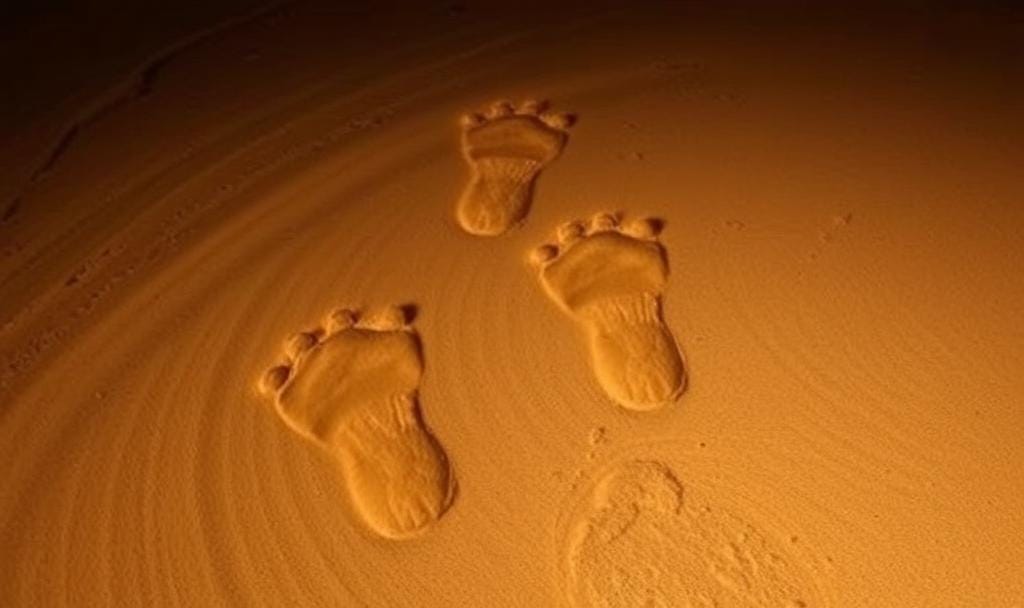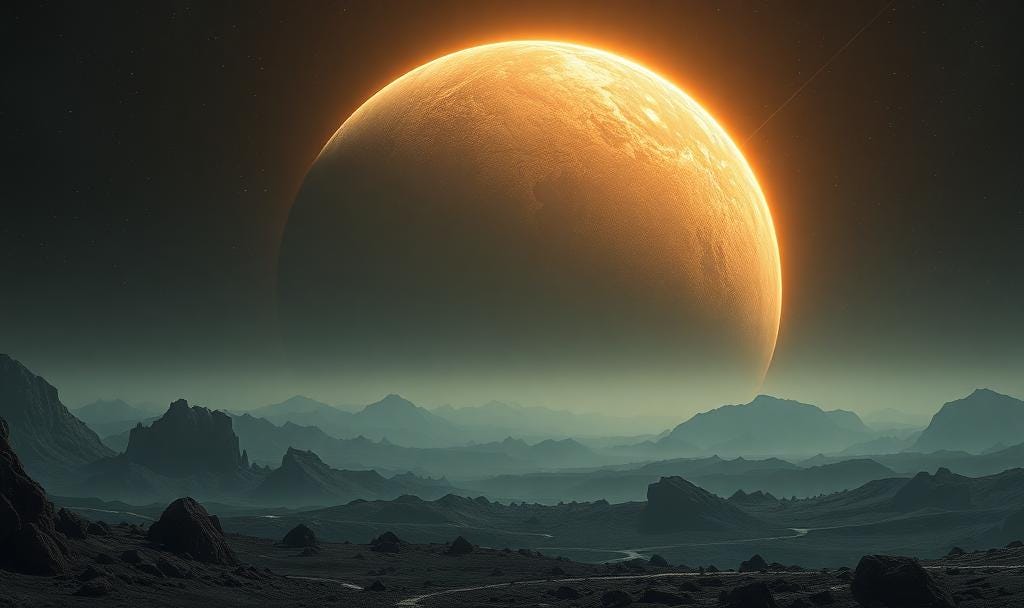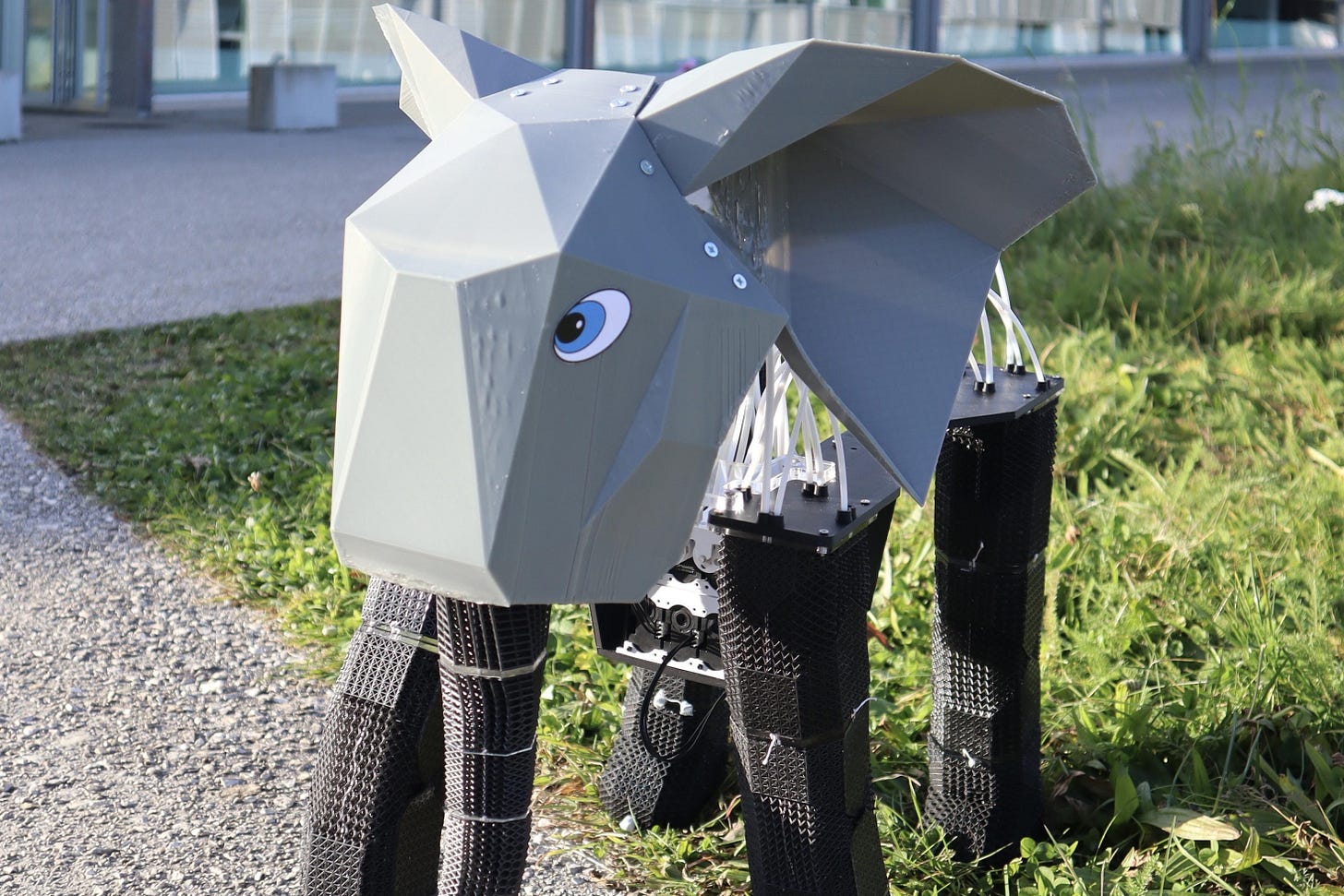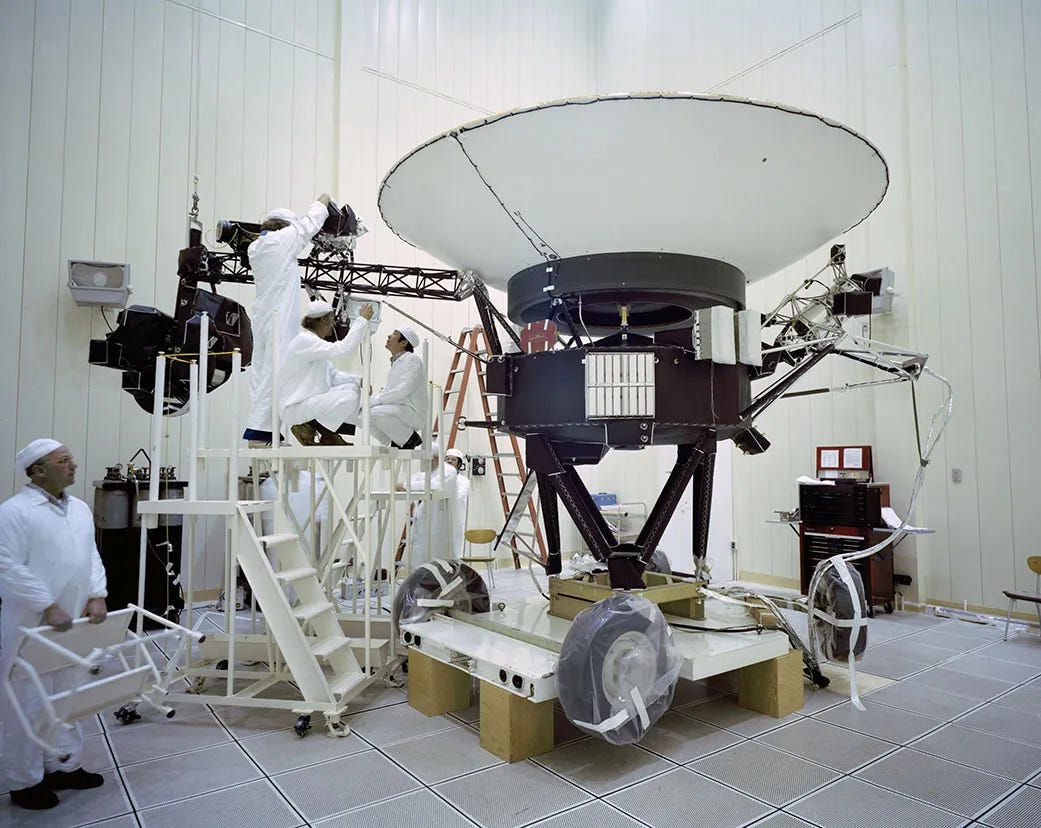The Weird Science Drop #14 👴 Let's all stop getting older
'Life' stuff on Titan, vaccine via dental floss, Antarctica discovery x2, plus saying hello to aliens
“Sawubona* Ageing - and all the aches and pains that come with it - is inevitable. But what if science could press a pause button on our slow march to oblivion? We might be getting close to doing just that. It’s also a reminder that scientists are humans, too, and their motivations can be powerfully personal. The study’s leader remembers how a doctor reacted to her own ailing grandmother - and now her work could transform the lives of millions. All this, plus Wi-Fi knows who you are, the hunt for Planet X, and why AI might be slowing you down. So hit that subscribe button fast!
Daniel
* Good morning in Zulu
Q: What do you do with a dead chemist? (answer at the bottom of the email)
Weird Science News
🔬 Many cells in your body are programmed to self-destruct. This sounds bad but when working right, the process - called apoptosis - helps to stop disease and cancers in their tracks.
However, there is a sinister version called necrosis that eventually leads to uncontrolled cellular destruction (never good) - which scientists now believe could be a culprit for many age-related conditions. They are working on a new type of drug, called an anti-necrotic, that would end this mayhem and be the first treatment ever for ageing itself.
The study’s lead author Carina Kern says when she was young, she watched as her grandmother’s health quickly declined from an age-related illness, and the doctors’ defeatist attitude has motivated her ever since. She told Popular Mechanics:
“At the time, I could not comprehend how I was so easily cured of nearly any injury and I would be back to normal. But with her, the doctors just said ‘you can’t intervene - it’s just ageing’.”
👴 So if we’re all going to live forever, the importance of solving the mysteries of cognitive decline - be that dementia or Alzheimer’s - has never been more important. It seems like every week we get the results of one study or another, all parts of a great big mind puzzle.
One of the more interesting developments came out when researchers found early signs of Alzheimer's disease may be hidden in the way a person speaks - not what we say but how we say it.
They were looking into 'tip of the tongue' phenomenon - also known as lethologica. It’s experienced by young and old alike. But as we grow older, finding the name for things can become more challenging, especially after the age of 60. Read Science Alert for more
🦶 It’s always more fun when archaeologists dig up something that shouldn’t be there rather than something that should. And you can definitely file this one under ‘huh?’ when they came across 115,000-year-old human footprints preserved in a prehistoric mudhole on the Arabian Peninsula.
The tiny batch of footprints was made in such unique, muddy conditions that they were kept in unprecedentedly good shape despite their age. This meant it could be worked out they were created by Homo sapiens who were using a ‘highway’ frequented by large animals as they migrated to stay ahead of the weather or the changing climate. Read more on AOL
🧬 Saturn's moon Titan has been a prime candidate for some sort of alien life. It’s the solar system’s biggest moon, has an atmosphere, and boasts lakes of lovely liquid hydrocarbons.
Everything’s pretty chilly but some scientists have likened it to a ‘frozen pie’ and that if you heated things up you’d be looking at a rather nice place to hang out.
And now NASA scientists have found that cell-like compartments called vesicles, needed to form the precursors of living cells, are able to form on Titan even now. Conor Nixon, from NASA's Goddard Space Flight Center, said:
"The existence of any vesicles on Titan would demonstrate an increase in order and complexity, which are conditions necessary for the origin of life. We're excited about these new ideas because they can open up new directions in Titan research and may change how we search for life on Titan in the future."
Studying Titan is not just a bug hunt, as it could give us clues on how life emerged on Earth. Read more on Space.com
👮♀️ We’re used to the idea that our fingerprints and DNA are unique to us. But what if the authorities could ID you just by the way your body blocked a wi-fi signal?
Italian researchers say this next-gen surveillance can track a person as they pass through signals sent by different networks - even if they’re not carrying a phone.
The team calls its approach ‘WhoFi’. They say it can be used to make sure, say, the suspect being surveilled is the same one whenever they are caught on camera.
This has been traditionally done by matching the subject's clothes or other distinct features in different recordings. But that’s not always reliable. Read more on The Register
Planet X marks the spot
Astronomers have been hunting the elusive Planet X for a hundred years, but now feel they’re finally getting close to finding it. The extra planet in our solar system is thought to be hiding away somewhere in the dark way beyond the orbit of Neptune.
Evidence for ‘Planet 9’ (I guess it was Planet 10 before Pluto got demoted) has been mounting recently, thanks to the weird orbital patterns of objects in the Kuiper Belt which hint at the presence of another guiding gravitational hand at work.
The Kuiper Belt is a far-away region at the very edge of our solar system full of icy rocks. While most are small, others include the aforementioned Pluto and its fellow dwarf planet Eris. It’s this region from which many of the comets that zoom past us originate.
Pluto was discovered in 1930 by Clyde Tombaugh, who was actually hunting Planet X. Even at the time, it was noted Pluto was a lot smaller than everyone expected, and Tombaugh himself continued to search for another, bigger body after taking all the plaudits.
Just this month, scientists with the Subaru Telescope operated by the National Astronomical Observatory of Japan ID’d a fourth member of the sednoids, a group of small bodies with ’peculiar orbits’, that could signpost where to look.
Named Ammonite, it’s around 230 miles wide and has been hanging around the solar system for 4.5 billion years. The way it moves across the sky appears to indicate an unseen Planet X is in play somewhere in the inky blackness of space.
What will Planet X be like?
Current theories suggest the missing planet is an ice giant around 10 times bigger than Earth and so far out it would take around 20,000 years to go around the sun.
It would be hiding beyond the Kuiper Belt some 20 times further away from the centre of the solar system than Neptune - and that’s why it’s been so difficult to spot. But that’s not where it would have been formed. It either was created much closer to the sun before being ‘kicked out’ by the big bully Jupiter or, even more enticingly, it’s a ‘hanger-on’ from another star system altogether.
Another possibility, of course, is that astronomers have spent years chasing a ghost and Planet X doesn’t exist. A pretty sobering thought for all those determined planet-hunters out there.
AI emperor’s new clothes
As mentioned on TWSD a few times already, I’ve developed a pretty dim view of AI. Now, I’m in no way a Luddite. The advances that have been made are nothing but remarkable, and we’re definitely hurtling towards that big singularity in the sky when the robots finally take over.
I’m more concerned about how it’s being marketed by nefarious tech companies, who’d sell souls to Beelzebub if given half the chance, all jumping on the bandwagon and slapping AI on everything. To be clear, it’s not AI but rather predictive text on steroids. Still impressive but by no means the real thing.
Having said that, this clever tech will revolutionise medical research, transportation, and the world of work. But, hang on, the latter might be under question.
A new study found that AI tools actually slowed down workers rather than making them more productive. A nonprofit AI research group took a look at the experience of seasoned open-source computer coders and found the super-smart AI tools given to them to accelerate their work had the opposite effect. The study’s authors said:
“Surprisingly, we find that when developers use AI tools, they take 19% longer.”
Researchers saw that AI models often stalled on minor obstacles that a developer could quickly resolve in the real world.
Now, this piece of work comes with many caveats - after all, we’re not all experienced programmers - but I think it’s a nice reminder of the power of the scientific method to cut through the spin.
Or, as one of the nine rules of the great Carl Sagan’s baloney detection kit might have it, don’t blindly accept claims from a tech bro!
BTW AI chatbots are ‘overconfident’ - even when they’re wrong, warns new research. They appear to be unaware of their own mistakes, prompting concerns about their increasing use.
Photo of the Week
A cute robot elephant could be the future of robotics. The scaled-down jumbo has been built to demonstrate a cutting-edge bioinspired 3D printing technology.
Researchers in Switzerland say they have pioneered a 3D-printable, programmable lattice structure for robotics that mimics the vast diversity of biological tissues – from a flexible trunk to rigid bone – using a single foam material.
For your ear holes
Famously, a golden phonograph record was attached to each of the Voyager spacecraft launched in the 1970s to explore our solar system. Both have now left us behind and are travelling through interstellar space at fantastic speeds.
Among the recordings are greetings in 55 languages. You can hear them above. Listening to them is quite a moving experience as again to evoke Carl Sagan:
“All decisions were based on the assumption that there were two audiences for whom the message was being prepared - those of us who inhabit Earth and those who exist on the planets of distant stars.”
Blast from the past
Staying with Voyager, the photo from NASA’s Jet Propulsion Laboratory taken on March 23, 1977, shows engineers preparing the Voyager 2 spacecraft ahead of its launch later that year. Forty-eight years later and Voyager 2 is now over 12 billion miles from Earth in the constellation Pavo. Radio signals take about 19.5 hours to reach us.
Cool Quote
“Kids are never the problem. They are born scientists. The problem is always the adults. They beat the curiosity out of kids. They outnumber kids. They vote. They wield resources. That's why my public focus is primarily adults.”
Neil deGrasse Tyson
Weird Science Factoid
Our human ancestors almost went extinct 900,000 years ago. The species from which we evolved suffered a major population drop from 100,000 to just 1,280 individuals - and didn’t recover for some 100,000 years.
Fries on the Side (aka the best of the rest)
🧊 A massive ancient river system has been found hidden under Antarctica’s thick ice cover, revealing a landscape that has remained hidden for nearly 30 million years. The discovery provides new insight into how the continent looked long before it froze over.
🏂 Staying in the South Pole, scientists have also come across hundreds of hidden trenches carved deep into the ocean floor beneath the Antarctic Ice Sheet. It turns out these channels have a direct impact on global sea level increases.
🐦 A remarkable video taken by a hunter has overturned 46 years of thinking about the extinction of a flightless bird on mainland New Zealand. The little spotted kiwi popped up on camera while a crew was chasing after an invasive species.
❤ Scientists were left stunned when checking out Uranus they realised the ice giant has a long-term partner. A minor planet sitting between Uranus and Neptune appears to have been keeping up with its much bigger ‘girlfriend’ in a delicate cosmic dance for thousands or even millions of years.
💉 Those of us scared of needles will no doubt be relieved to know that medical researchers have come up with a new way to deliver vaccines by using dental floss. The project's leader said the idea came to him after reading that the pockets of gum between the teeth are exceptionally good at absorbing molecules.
More from TWSD
Rocket science and the occult
Who wants to live forever?
A wonder from the deep
Most-visited links from last week’s TWSD
A Scientist Says Humans Will Reach the Singularity Within 20 Years
A continent is splitting in two, the rift is already visible, and a new ocean is set to form
About TWSD
Science is weird, and here’s the proof. The Weird Science Drop goes where other, more-sensible newsletters fear to tread. Every week, we grab our trusty white lab coat, bunch of bubbling test tubes and world-ending robot prototype to go in search for the overlooked, under-the-radar and, above all else, most madcap science news, views and research.
About Me
Daniel Smith is an ancient experienced journalist who has worked for a host of news publishers on both sides of the Atlantic. A long, long time ago, he fancied himself as an astrophysicist but instead turned out to be the worst scientist since the man who mapped out all those canals on Mars that turned out to be scratches on his telescope's lens. Luckily, he is now not working on the Large Hadron Collider inadvertently creating a black hole that would swallow the world by pressing the big red button but is safely behind a desk writing this newsletter, bringing you the fantastical underbelly of nature... The Weird Science Drop.
Have I Missed Anything?
Feel free to throw me an email or just fill out this super simple form. I'll read each and every one. Promise.
Joke answer: Barium!








Thanks Hugh! Good spot 👍
I've never done 'shrooms of course but they are always an interesting area for research! https://www.sciencealert.com/psilocybin-extends-life-of-human-cells-by-50-in-wild-new-study
A good read - thank you!